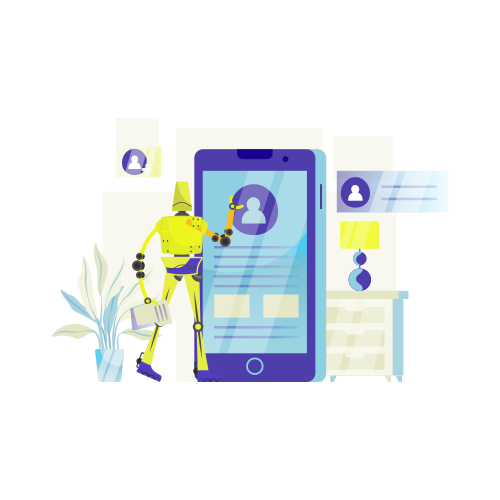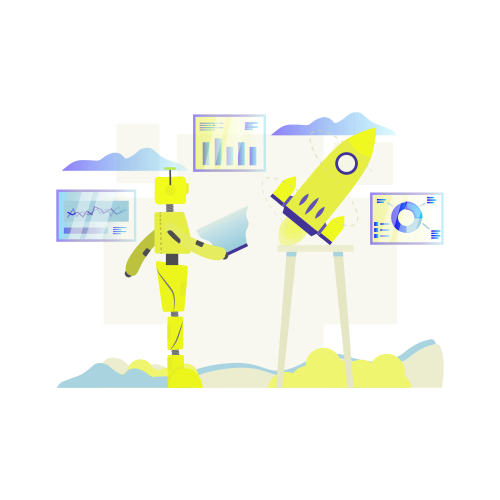Agentic AI Isn’t Ready to Run the Show, But Blueprint Helps It Get There
There’s no denying it—Agentic AI is one of the most exciting developments in automation today. As EY puts it, it marks “the next frontier,” where AI isn’t just responding to prompts, but autonomously planning, learning, and acting across complex business processes.
In theory, agentic systems are capable of so much more than traditional rule-based automation. They’re designed to chain together reasoning steps, trigger different tools depending on the situation, retain memory across interactions, and operate within guardrails to prevent risky behavior. In practice, though? That vision still has a lot of rough edges.
The Reality: Power Meets Growing Pains
Despite the buzz, many organizations exploring agentic AI are already feeling the strain. EY’s research reveals that while nearly half of surveyed tech firms are deploying agentic systems at scale, most are also confronting critical gaps in performance, governance, and trust.
Here’s what’s happening on the ground:
-
Agents aren’t as dependable as they seem. While they can summarize documents or draft responses, they often struggle to complete structured tasks with the consistency enterprise environments demand.
-
Agent sprawl is real. As more agents are created—sometimes with overlapping responsibilities or unclear logic—teams end up managing dozens of mini-systems that don’t play well together.
-
Governance is lagging. With agents operating across different platforms and tools, it becomes difficult to track who did what, when, and why—especially in regulated industries.
-
Success metrics don’t go far enough. Teams often rely on technical outputs (like task completion rates or time saved) without assessing broader impacts like safety, accuracy, or accountability.
-
There’s a trust deficit. When agents hallucinate or take unintended actions, they can erode confidence quickly—especially if there’s no human-in-the-loop or fallback system.
This isn’t a failure of vision. It’s just a sign that agentic AI needs help becoming enterprise-ready. And that’s where Blueprint makes a meaningful difference.
Blueprint Fills the Gaps That Matter Most
Blueprint doesn’t try to reinvent your automation strategy. It enhances it—by giving agentic systems access to something they desperately need: structured, proven automation logic they can run with confidence.
Instead of relying on an agent to guess its way through a process, Blueprint lets it tap into your existing Power Automate Desktop (PAD) flows—automations that are already tested, trusted, and aligned with how your business works. You can sync those flows into Blueprint’s platform, then expose them to Microsoft Copilot agents with just a click. From there, the agent can trigger automations with clarity and precision, without risking improvisation.
Here’s how it works:
-
Sync your PAD flows into Blueprint. Whether you have five flows or fifty, you can quickly import what’s already working.
-
Connect them to your Copilot agents. With a single click, you can make those flows available inside your AI agents.
-
Blueprint builds the logic for you. No manual wiring or code needed—the platform ensures every step is properly mapped.
-
Test and deploy. Your agent runs the automation, returns a verified answer, and logs the outcome.
It’s a simple model, but it solves for some of the biggest risks organizations face when implementing agentic AI.
Why This Matters
When EY discusses the “four pillars” of agentic AI—planning, tool use, memory, and guardrails—it’s clear that most of today’s agent deployments are still shaky in all four areas. Blueprint provides the scaffolding that reinforces each of these capabilities.
-
Planning becomes repeatable. Agents don’t have to build workflows from scratch. They can execute flows that already reflect best practices within the enterprise.
-
Tool use becomes reliable. Instead of attempting to interface with dozens of APIs or GUIs through trial and error, agents can invoke cleanly integrated automations.
-
Memory is embedded in the flow. With Blueprint, agents benefit from process logic that already includes checks, balances, and state awareness.
-
Guardrails are built-in. Supervisory steps, decision points, and audit logs ensure that agents stay within defined boundaries—and that human teams stay informed.
This kind of architecture also addresses one of the most overlooked challenges in EY’s analysis: sustainability. When organizations spin up too many agents without a central foundation, they lose visibility, scalability, and performance. Blueprint keeps things grounded—so your agents aren’t just running, they’re running well.
What It Looks Like in Practice
Let’s take a real-world example: invoice processing.
Without Blueprint, a Copilot agent might read a PDF invoice, try to extract the relevant data, and post it to your finance system. That’s a high-risk move—what if it misreads the vendor name? Or posts the wrong amount?
With Blueprint in the mix, the process changes entirely. Now, the agent:
-
Triggers a PAD flow via Blueprint that extracts the data using OCR
-
Validates the vendor against an internal database
-
Escalates any mismatches to a human reviewer
-
Logs every step, including timestamps and outcomes
The difference? Accuracy, traceability, and trust. You’re not hoping the agent makes the right decision. You’ve given it a clear, vetted playbook.
Smarter Agents Start With Better Infrastructure
Agentic AI isn’t going anywhere. It’s reshaping how we think about work, from IT service desks to supply chains, customer support, and compliance reviews. However, no matter how sophisticated the agent, it still requires assistance in translating language into action.
Blueprint doesn’t compete with agentic AI. It completes it.
By plugging into what already works—your PAD flows, your process documentation, your enterprise standards—Blueprint helps agentic AI do what it was meant to do: automate real work, accurately and safely, without burning trust or resources.
So before you scale your next wave of agents, ask yourself:
-
Do they know what “done” looks like?
-
Can they act with consistency?
-
Are you confident they’ll escalate when something’s off?
-
Will you know what they did—and why?
If the answer to any of those questions is “not yet,” Blueprint might be the missing link.
Share this
Recent Stories

The Problem with Autonomous Agents—and How Blueprint Solves It

From RPA to APA: Unlocking the Next Era of Intelligent Automation


